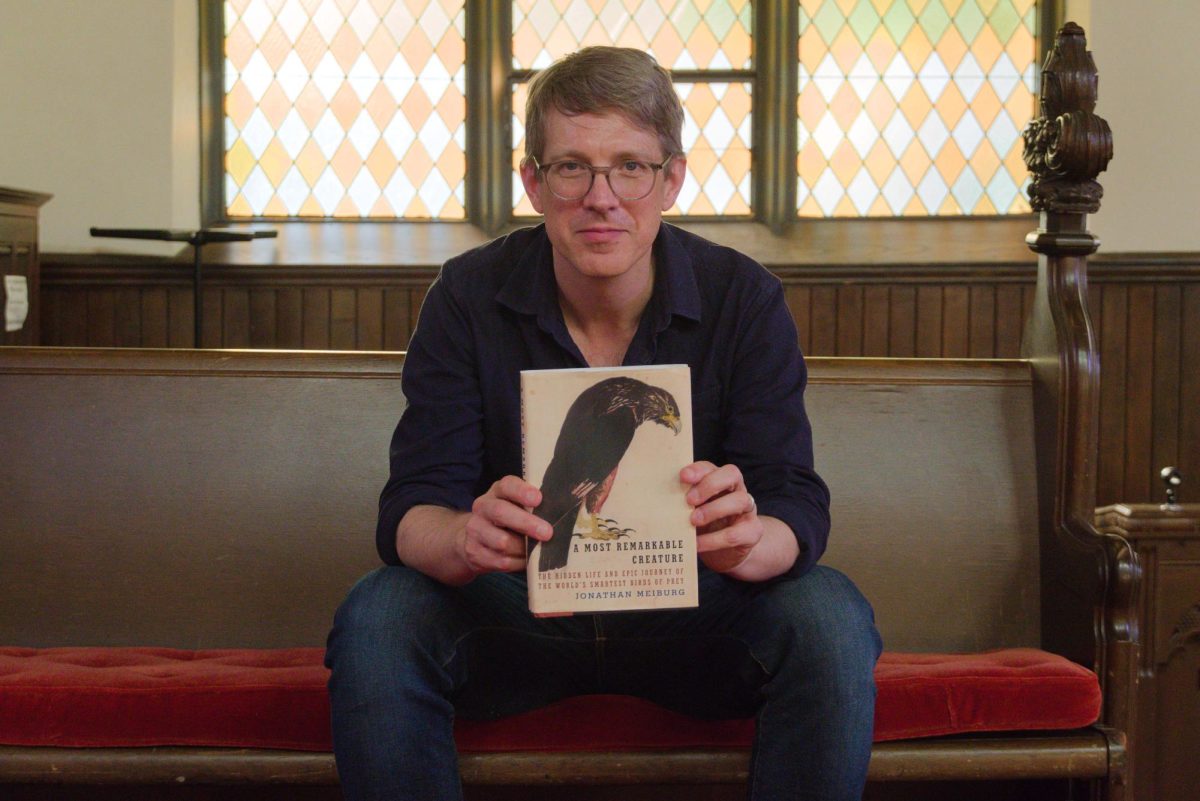By Geo Gomez
gomezgeo@grinnell.edu
House of Ladosha is a fierce rap group coming from the dark and devastating depths of New York. Like a beast tearing the figurative “closet” of queer culture to shreds and unleashing the revelry of a gay wonderland upon the world, House of Ladosha comes correct with diva realness, drag and ferocious lyrics.
The central members of House of Ladosha are Dosha Devastation and Cunty Crawford Dosha. Musically, these two members carry the weight of the group. But like any good ballroom house, the group is more accurately described as a collective of fashion forward and edgy queer youth.
Their music is influenced by crunk music—the kind of music Rick Ross blasts out of his car while slow cruising down the block and mean muggin’ out of the window. Except in the case of House of Ladosha’s music, the mean muggin’ is not complete without a few hair flips and bubblegum pops.
House of Ladosha’s style is rooted in the buffet of underground and subcultures characteristic of the Big Apple. Their lyrics are rich with the ballroom culture of New York, documented in the film Paris is Burning, which was shown last night in Bob’s Underground Café as part of the week-long lead up to up House of Ladosha’s performance.
The ballroom scene was populated by colored, queer youth who did not find their fame in mainstream media but in the gatherings that they held for themselves. In these ballrooms, queens face off in a fierce battle where the claws come out. The ballroom scene continues to this day, and House of Ladosha is living proof that the culture is still alive and thriving.
Their raps incorporate the braggadocio typical of tradition, but specialize in fashion and sex references in a way that rap has not before, at least not with male artists. Their raps about their sexual and sartorial conquests would make both Lil’ Kim and RuPaul gag.
In a video for their song “Rollin’,” Devastation’s Cheshire Cat smile lures the listener into her world, where she is the H.B.I.C (Head B*tch in Charge) and you’re lucky just to hear her rap:
“Gabana I got that, Chinchilla I want that, yo n*gga I f*cked that, my pussy he ate that… my ass you can kiss that.”
Their lyrics lash out viciously at anybody who doubts that these girls are fabulous. At the same time, watching House of Ladosha’s videos, their energy and giddiness are infectious. The group’s competitive “come-at-me” behavior is characteristic of the ballroom and backed by a booming beat that could echo through the hardest of clubs.
At the same time, when Devastation delivers lyrics like these, the listener experiences a paradigm shift of the most fabulous kind, questioning whether the rapper can use those words.
Usually, rap lyrics this dirty have only been traditionally used in a heterosexual context. But Devastation’s raps are delivered in a bratty tone that you can’t help but laugh and keke along to. Many of her references are to traditional and fundamental roots of queer culture.
Devastation leaves no room for debate as to whether she can rap about this kind of stuff or not. In a song called Perched Never Parched, where Devastation raps the beat of Nicki Minaj’s “Did it On Em”, Devastation raps:
“Went from verse sayin to Versace from bottom feeding to topping. Put this sh*t on the map, so I know where it’s at, b*tch it’s just where I left it.”
With the raw attitude and self-confidence with which she delivers, it’s really all about her performance. And rap performance isn’t the only kind of performance here—House of Ladosha tramples the gender binary like it was a runway.
The group performs in a mixture of drag and androgyny. Wigs, heels, dresses, crop-tops, and lipstick abound on the stage as the group spits lyrics about their fashions, their fame, and their fierceness.
For anyone looking to learn more about the kind of scene House of Ladosha comes from, the panel held the night of Tuesday November 27th was very helpful. A panel of three students and Adrian Khactu, English, discussed and deconstructed the genre of “queer rap” and its significance in contemporary times. References to Le1f, Mykki Blanco and Azealia Banks showed just how genre-blurring (and gender-binary blurring, for that matter) these artists are.
Khactu, aside from employing the wonderfully witty phrase “barbification” in reference to Nicki Minaj, discussed the way in which queerness adds another layer of meaning to rap—one of the panel’s most interesting points. He reminded the panel and the audience that rap was originally an art form meant to speak out against the mainstream—it was a form of resistance. He also reminded us that queerness and queer people have historically been oppressed. When the two meet, we can’t separate the historical context of either; queerness adds another layer to the history of speaking out and of subversion traditional to rap.
This rap group definitely brings something new to the floor. With their in-your-face queerness and refusal to apologize, House of Ladosha is carrying—carrying the torch of queer culture and trailblazing for the tradition of queer expression. Catch them in Gardner this Saturday at 9:00 p.m.


















































